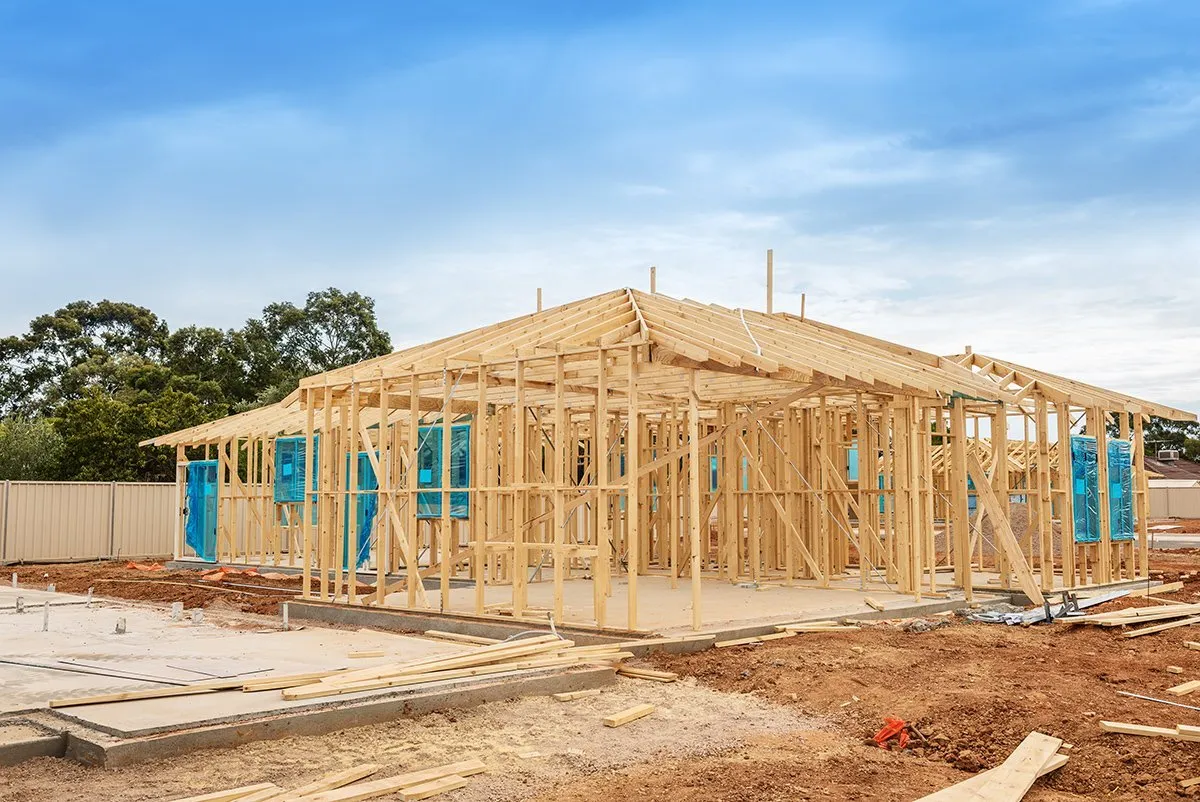Residential construction encompasses the process of building or renovating homes, apartments, or any residential structures. It involves meticulous planning, precise execution, and adherence to safety and regulatory standards to ensure the creation of safe and habitable living spaces. Whether constructing a single-family home or a multi-unit development, the principles of residential construction remain consistent: creating durable, functional, and aesthetically pleasing dwellings that meet the needs of homeowners.
Key Phases of Residential Construction
Planning Phase
The planning phase of residential construction is critical as it sets the foundation for the entire project. It begins with site selection and preparation, where factors such as location, accessibility, and environmental impact are carefully assessed. Architectural design and blueprints are then developed, detailing the layout, dimensions, and structural specifications of the building. This phase also involves obtaining necessary permits and approvals from local authorities to ensure compliance with zoning laws and building codes.
Pre-Construction Phase
Before breaking ground, the pre-construction phase focuses on assembling the project team and finalizing contractual agreements with contractors and subcontractors. Clear communication and coordination among all stakeholders are essential during this stage to establish timelines, budget constraints, and quality standards. Additionally, this phase includes conducting feasibility studies and risk assessments to anticipate and mitigate potential challenges that may arise during construction.
Construction Phase
The construction phase is where the vision of the residential project begins to take shape physically. It typically starts with laying the foundation, which involves excavation, footings, and concrete pouring to create a stable base for the structure. Once the foundation is in place, framing begins, utilizing wood, steel, or other materials to construct the skeletal framework of the building. Simultaneously, crucial installations such as electrical wiring, plumbing systems, and HVAC (heating, ventilation, and air conditioning) are integrated into the framework to ensure functionality and efficiency.
Post-Construction Phase
After completing the main construction activities, the post-construction phase focuses on completing the finishing touches and preparing the property for occupancy. This includes conducting thorough inspections to verify that all building components meet regulatory standards and safety requirements. Final landscaping and exterior finishes, such as siding and roofing, are also completed during this phase to enhance the aesthetics and curb appeal of the residential property. Once all inspections and certifications are obtained, the keys are handed over to the homeowner, marking the completion of the residential construction project.
Materials and Techniques in Residential Construction
Commonly Used Materials
Residential construction utilizes a variety of materials chosen for their durability, cost-effectiveness, and aesthetic appeal. Wood remains a popular choice for framing and interior finishes due to its versatility and ease of construction. Concrete is another essential material known for its strength and ability to withstand environmental factors, making it ideal for foundations and structural components. Additionally, steel is favored for its structural integrity and ability to support large-scale residential developments, while environmentally friendly materials like recycled wood and sustainable composites are gaining popularity due to their minimal environmental impact.
Modern Construction Techniques
Advancements in technology and construction practices have revolutionized residential building techniques, improving efficiency and sustainability. Prefabrication, for example, involves manufacturing building components off-site and assembling them on-site, reducing construction time and minimizing waste. Green building practices integrate energy-efficient designs and materials to reduce the environmental footprint of residential projects, promoting healthier indoor environments and lower utility costs for homeowners. Innovations such as 3D printing are also emerging in residential construction, allowing for rapid prototyping of building components and customization of architectural designs.
Challenges and Considerations
Residential construction projects are complex endeavors that present various challenges and considerations for builders and homeowners alike. One of the primary challenges is budgeting and cost management, as unexpected expenses or market fluctuations can impact project finances. Effective cost estimation and ongoing financial oversight are essential to prevent budget overruns and ensure project viability. Additionally, navigating regulatory requirements and obtaining necessary permits can be time-consuming and requires thorough knowledge of local building codes and zoning regulations.
Dealing with unforeseen delays and issues is another common consideration in residential construction. Factors such as inclement weather, supply chain disruptions, or unforeseen site conditions can prolong project timelines and affect overall project scheduling. Effective project management strategies, including contingency planning and proactive communication among project stakeholders, are crucial for mitigating delays and minimizing their impact on project delivery.
Safety and Regulatory Compliance
Ensuring safety on construction sites and complying with regulatory standards are paramount in residential construction projects. Construction sites are inherently hazardous environments, with risks ranging from falls and electrical hazards to machinery accidents and exposure to hazardous materials. Implementing robust safety protocols and providing ongoing safety training for workers are essential to prevent accidents and injuries. Compliance with building codes, zoning regulations, and environmental laws is also critical to avoid legal repercussions and ensure the structural integrity and habitability of residential buildings.
Future Trends in Residential Construction
Adoption of Smart Home Technologies
The integration of smart home technologies is transforming residential construction by enhancing convenience, comfort, and energy efficiency for homeowners. Smart home features such as automated lighting and temperature control systems, security systems with remote monitoring, and energy management solutions are increasingly being incorporated into new residential developments. These technologies not only improve daily living experiences but also contribute to long-term cost savings and sustainability by optimizing energy usage and reducing environmental impact.
Sustainability and Energy Efficiency Trends
The demand for sustainable and energy-efficient residential construction practices is growing as homeowners and builders prioritize environmental responsibility and energy savings. Green building certifications, such as LEED (Leadership in Energy and Environmental Design) and ENERGY STAR, are becoming standard benchmarks for evaluating the sustainability of residential buildings. Design strategies such as passive solar design, which maximizes natural light and heat gain, and the use of renewable energy sources like solar panels and geothermal systems are increasingly being integrated into residential construction projects to minimize carbon footprints and reduce reliance on fossil fuels.
Conclusion
In conclusion, residential construction is a multifaceted process that requires careful planning, meticulous execution, and adherence to safety and regulatory standards. From the initial planning and design phases to the completion of construction and occupancy, each stage plays a crucial role in delivering high-quality, sustainable homes that meet the needs and expectations of homeowners. By leveraging modern construction techniques, embracing smart home technologies, and prioritizing sustainability, the residential construction industry continues to evolve to meet the demands of a changing world. Building upon these principles ensures that future residential developments are not only functional and aesthetically pleasing but also environmentally responsible and resilient for generations to come.



